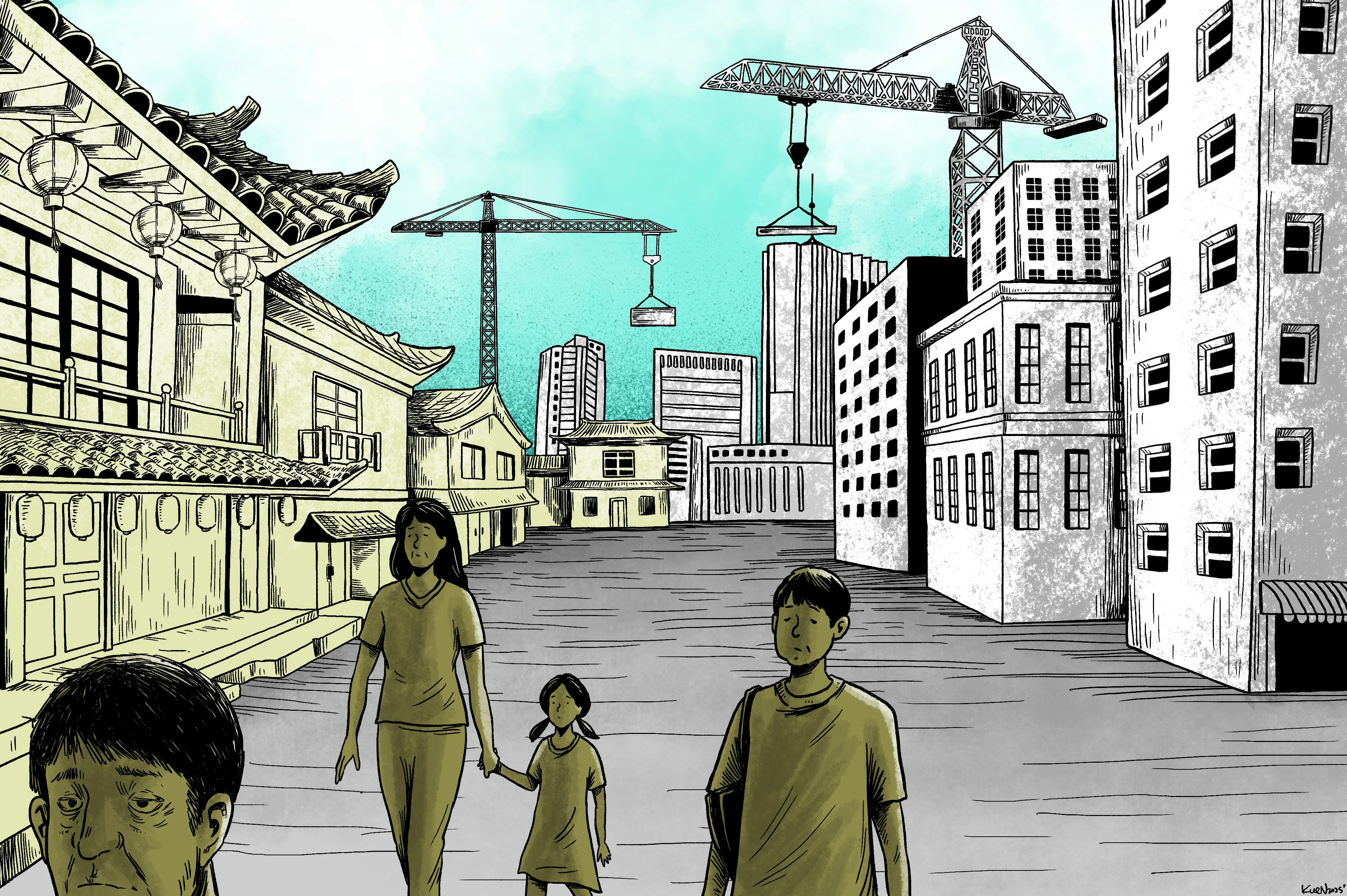Copyright scmp

Few areas of China reflect the country’s decades-long economic transformation more vividly than its cities. Rapid development has turned villages into dense urban landscapes and already sizeable metro areas into some of the world’s largest population centres. As the rate of urbanisation slows and the country transitions into a new economic era, we explore how select Chinese cities are navigating the change. Read the rest of our series here. There is hardly a city in China like Datong, where locals often reference a former mayor in daily conversations. The name is Geng Yanbo, who assumed office during the 2008 global financial crisis. Riding the momentum of Beijing’s 4-trillion-yuan stimulus package, he oversaw a sweeping transformation during his five-year tenure, one which saw nearly every structure rebuilt or renovated. Nestled along the north-south flowing Yu River in the central province of Shanxi, and renowned for its coal mining, Datong’s restoration efforts divided the city into two contrasting zones. The west side saw the reconstruction of the ancient, square-shaped city – surrounded by high walls, in an attempt to recreate the city’s appearance from centuries ago – while the east side became a modern district with wide roads and high-rises, housing many relocated residents. This experiment made Datong a unique case in China’s urban planning landscape. Despite initial doubts of resource waste, the results of Geng’s campaign gained recognition and popularity among residents, especially as the city’s pillar industry shifted away from coal towards tourism. Local taxi driver Shi Shouyi was among those to benefit. Once living in a shabby bungalow next to a 1,000-year-old Buddhist temple – where the neighbourhood of more than 30 households shared one public toilet – his family moved into a new, modern flat around the same time. “In the past, even a bird flying overhead would turn black,” the 56-year-old recalled. “Now, the environment is much better.” Today, after decades of rapid urbanisation, Chinese cities are being urged to shift their focus from large-scale, incremental expansion to optimising existing resources and enhancing residents’ quality of life. “Transform the philosophy of urban development by placing greater emphasis on a people-oriented approach.” That was the message delivered in July at a surprising two-day meeting of the country’s political elite, who assembled for a rare Central Urban Work Conference. In that sense, Datong embodies a city of contradictions. While its transformation has proven effective in making the city more liveable, the massive demolition and reconstruction approach that once defined its development is increasingly seen as outdated. In addition to early efforts that enabled cheap financing and profitable land sales to pay off debt, Daton’s rich historical and cultural resources made the transition smoother. A key industrial city in decades past, thanks to its coal reserves, Datong has a legacy spanning more than 1,500 years. From the year 398 to 493, Datong – then known as Pingcheng – was the capital of the Northern Wei dynasty. During the multiple dynasties that followed, it remained a commercial, military and cultural hub. It is also home to the Yungang Grottoes, a Unesco World Heritage site with 252 caves and 51,000 statues from the 5th and 6th centuries. But despite Datong’s successful transformation, Beijing in July expressed an aversion to the type of wholesale urban redevelopment Geng oversaw as mayor. That is largely due to a raft of large-scale projects in other parts of China that ended up amassing huge piles of debt, and a prolonged property downturn that has rendered the earlier development model obsolete. A number of projects also gave rise to headline-making instances of corruption. As of this year, nearly half of the more than 2,800 newly built “ancient towns” across the country – many of which look indistinguishable – have become “empty cities”, according to several mainland media outlets. That includes a project – Dayong Ancient City – near the world-famous Zhangjiajie National Forest Park in Hunan province. At a cost of more than 2.4 billion yuan (US$351 million) to build, it has continued to incur losses since its trial operations began in 2021, and the operator is now on the brink of bankruptcy. Not even Geng himself could get lightning to strike twice. After serving in Datong, Geng went on to become mayor of Taiyuan – the capital of Shanxi – where his next ancient-town project has languished in relative desolation. A newly built traditional Chinese-style architectural complex now hosts few businesses and tourists, let alone residents. Datong’s transformation resulted from the “convergence of the right time, right place and right person”, said Zhai Yong, a local historic preservation scholar. Still, that’s not the end of the story. While the overall direction of Datong’s urban transformation was sound, many issues cropped up on the periphery, Zhai said. “The gradual improvement of the city is a process of time,” he said. Inside the old town’s high walls, areas near major temples and attractions in the south were bustling with tourists on a Wednesday afternoon in September. But much of the new architecture gives off an artificial vibe, similar to several other commercialised ancient towns across the country. Most of the facilities and local personnel cater solely to the tourism trade. Meanwhile, other areas are quiet, lacking both the foot traffic and vibrant atmosphere a tourist attraction should have. While some old residential buildings await demolition, with inhabitants gradually moving out, many new high-end courtyard homes in the northwest corner – completed in 2020 – remain largely unoccupied. “Those who want to live here [in the courtyard homes] can’t afford to buy, and those who can afford to buy don’t want to live here,” said a local guest house owner. Despite the booming tourism sector, Datong continues to see its population decline, as the city’s limited industries and few major enterprises fail to generate sufficient or appealing job opportunities for young residents. Much of the old town still resembles an unfinished construction zone. While some sites are still developing tourist facilities, such as hotels, there is also an ongoing project involving a public school. A lack of public service infrastructure, including schools and hospitals, has long been a point of criticism in the old-town area, as most such amenities were relocated to the new town from 2008 to 2013. If you try to create a city that merely resembles an ancient one, it ends up feeling neither authentic nor ancient – an awkward imitation Zhai Yong, Datong historic preservation scholar Some residents have said they expect most of the new buildings to mimic traditional Chinese architecture, similar to that of the uninhabited courtyard homes, but Zhai argued that would be a misrepresentation of an authentic historic town. “An ancient town embodies a layered history, not just a place that looks ancient,” Zhai said. “Many traditional Chinese timber-framed structures have a lifespan of only 40 to 50 years. The reason so many historical relics have survived is due to ongoing maintenance and repair.” For Datong, its rich history comprises elements from the Northern Wei, Liao, Jin, Yuan, Ming and Qing dynasties, as well as modern periods – and they all come together, he said. “That is what makes it truly ancient,” Zhai explained. “It preserves the past while absorbing outside influences. If you try to create a city that merely resembles an ancient one, it ends up feeling neither authentic nor ancient – an awkward imitation.” Creating merely a beautiful or artificially ancient appearance is also not the “people-centred” approach to urban development that the central government advocates for, according to Tao Ran, a professor at the Chinese University of Hong Kong, Shenzhen. Instead, splashing out huge amounts of cash on sprawling tourism development is essentially “growth-oriented”, with an emphasis on boosting the economy rather than improving the lives of residents, Tao said. “This could result in a severe overcapacity of facilities that serve only tourism industries, while [essential services for] the people are severely lacking,” the professor said. “Real people-oriented development means spending on ‘soft’ issues, like care of the elderly, medical facilities, children’s education and housing renovations.” Meanwhile, the passing of the peak era of large-scale demolitions and comprehensive urban renewals does not mean an end to all such activities in China’s future urban-renewal efforts, Tao said. For example, many older buildings that lack cultural-preservation value in major Chinese cities still lack basic amenities such as lifts and proper heating, including workers’ residential complexes that may be 60 or 70 years old. “The quality of life for residents in these buildings is very bad,” Tao said, concluding that such structures “should be gradually torn down and rebuilt, and the government and residents can split the bill”.



